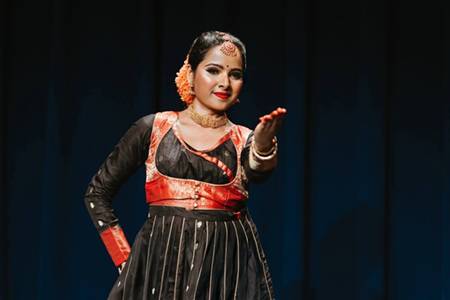
Indian Classical Ace Kathak Dancer NEEHARIKA TUMMALA Her Recent Performance In Manhattan , New York Was Highly Appreciated By Audience & Media
“I began my dance journey in undergrad under Joanna D’Souza, a senior disciple of Pandit Chitresh Das. It was Joanna di, who cultivated my love for Kathak, and developed my form and style.
When I moved to India, Seema Mehta, another disciple of Guruji’s continued to be a bridge for my education and exposed me to another facet of Guruji – his evolution in the last 2 decades. When I moved to New York, I was lucky to have Rachna Nivas, fortuitously relocate from San Francisco to New York, where I was able to build on my prior foundation and study this Gharana’s dynamic style, technique and wisdom.
During this time, I have also received a lot of love from Rukhmani Mehta, who trained me for readiness to be an apprentice dancer in the company, and from Seibi Lee, who transmitted knowledge during the covid years.
No other student in this lineage has been the product of so many elders, who have graciously poured their knowledge into me and have shaped me to become the dancer I am today. I am simply a product of their immense investments into me. With deep gratitude and blessings from the elders in my lineage, I walk into this stage, knowing that I am another link in a beautiful long chain.
Manthan, or in my case, Atma Manthan, is the churning of the self, is what my solo journey was. I had to turn within to understand my unique voice, style and what it is that I wanted to say through this medium.
I started with an invocation to Goddess Ganga, by Adi Sankaracharya, tuned by Jayanta Banerjee to raag Lalit. I sang the invocation because I wanted the audience to experience Lalit and devi, the way I evoked it. The haunting, yet peaceful melody beautifully showcased elements of our traditional rangmanch, re-imagined for Ganga.
I proceeded to Teentaal Thaat, where I slowly opened the raag through poses and improvisation and moved through vilambit, madhya and dhrut compositions. Thaat was deeply supported by Satyaprakash Misra on Tabla, who gave sangati where needed but also gave me ample space to play. The audience specifically spoke about how they loved our upaj and that the thaat was exciting because they didn’t know where it would go next.
My next piece was a traditional gat bhao, the story of Govardhan Giri, where the villagers of Vrindavan seek sharagati from Krishna from Indra’s storm. Gat Bhao immersed me in raag Miyan Malhar, where we created and showed a storm through kathak – the rain, the winds, the thunder. Such is the power of Kathak footwork and imagery.
Next I proceed to a Khamaj Tarana by Ali Akbar Khaan Saab, given to me by Joanna di, who learned it directly from her. It was her choreography that I got to do on stage after many years with more grace and taiyyari.
Finally, in an ode to my mother tongue Telugu, I presented a bhajan by Annamacharya, Brahmam Okate. This song says that all living things have the same supreme consciousness and reality, brahmam is one. A fitting way to end the evening by going back to the ultimately philosophy of the subcontinent.
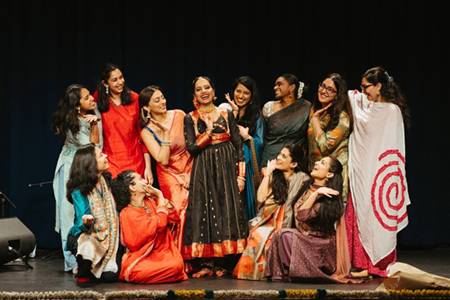
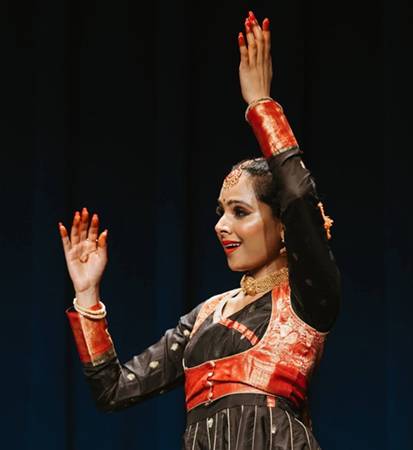
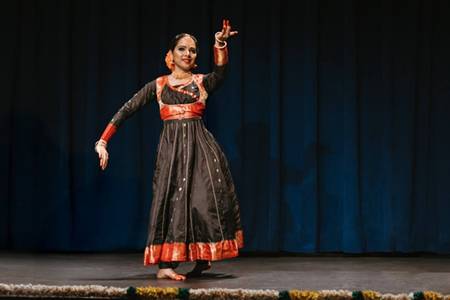
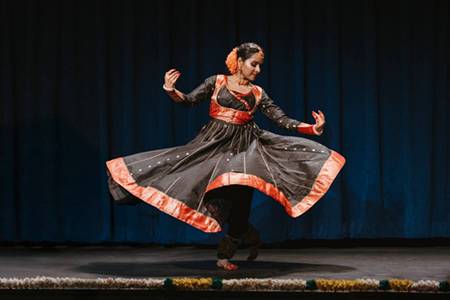

Indian Classical Ace Kathak Dancer NEEHARIKA TUMMALA Her Recent Performance In Manhattan , New York Was Highly Appreciated By Audience & Media

